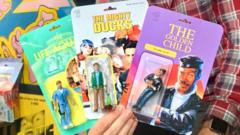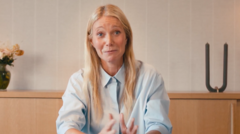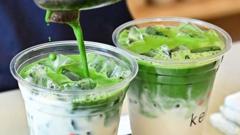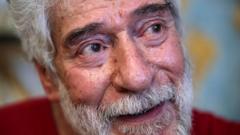As artists uncover the implications of AI-generated art, they rally against "starter pack" imagery, reminiscent of their handcrafted creations.
AI Dolls Spark Controversy as Artists Fight Back Against Automated Creativity

AI Dolls Spark Controversy as Artists Fight Back Against Automated Creativity
The rise of AI-generated dolls has led real artists to express their frustration, fearing for their livelihoods.
In a world increasingly captivated by the innovative allure of artificial intelligence (AI), a spotlight is now shining on the artists who feel overshadowed by this technology’s burgeoning trend. Most notably, the automated creation of doll-like images has sparked a counter-movement among human creators, who are voicing concerns over the implications for their work and the value of genuine artistry.
Since early April, the popularity of AI-generated "starter pack" images depicting users as dolls has surged, igniting worries among artists about the potential devaluation of their craft. Nick Lavellee, a custom action figure maker with six years of experience, shared his apprehensions about the effect of this digital influx, stating, "AI images have saturated social media, and people are starting to get tired of them." With commissions and public perception on the line, Lavellee has seen the admiration for his handcrafted creations dwindle in the midst of AI-induced saturation.
This concern is echoed by a growing movement on social media, known as #StarterPackNoAI, which advocates for the preservation of human creativity against AI encroachment. The initiative, which gained traction on platforms like Instagram and X this month, has united artists like Maria Picassó Piquer, who expressed her commitment to the movement as both a fun challenge and a significant statement. "While AI pieces all looked more or less the same, there’s an undeniable diversity in human works," she said.
Others in the art community fear the impact on intellectual property, as AI technologies often scrape existing art for data. Illustrator Dav le Dessineux, based in Bordeaux, reported firsthand losses in contracts to AI design, prompting him to join the resistance movement. "I'm tired of the deluge of AI-generated doll images," he noted, drawing attention to the essential tools of artistry that extend far beyond the technological marvels.
Echoing the sentiments of rebellion against the robotic reproduction of creativity, artists like Eli Dibitonto and Evie Joyce shared their experiences of creating self-portraits. Dibitonto highlighted the carefree process of illustrating his own starter pack, while Joyce emphasized the personal connection and nuance imbued in human artistry. "With AI, you can lose that unique touch; it lacks the personality that our works reflect," she asserted.
Despite the growing unrest, some creators, like Nick Lavellee, recognize potential opportunities for AI use within artistic practices. Lavellee stated, “I think all of us have experimented with it,” advocating a balanced perspective on technology's role in creativity. In a broader context, media expert Henk van Ess critiqued the superficial outputs of AI, comparing their use to trivial tasks while overlooking its revolutionary potential in solving genuine societal issues.
Ultimately, while the surge of AI dolls continues to rise, artists remain resilient, focusing on their intrinsic value and the joy they bring to their audiences. “I want people to appreciate the difference between what I create and what’s computer-generated,” Lavellee remarked. As artists remain determined to assert their narrative, they hold onto the hope that genuine creativity will ultimately prevail against the tide of automated artistry.


















